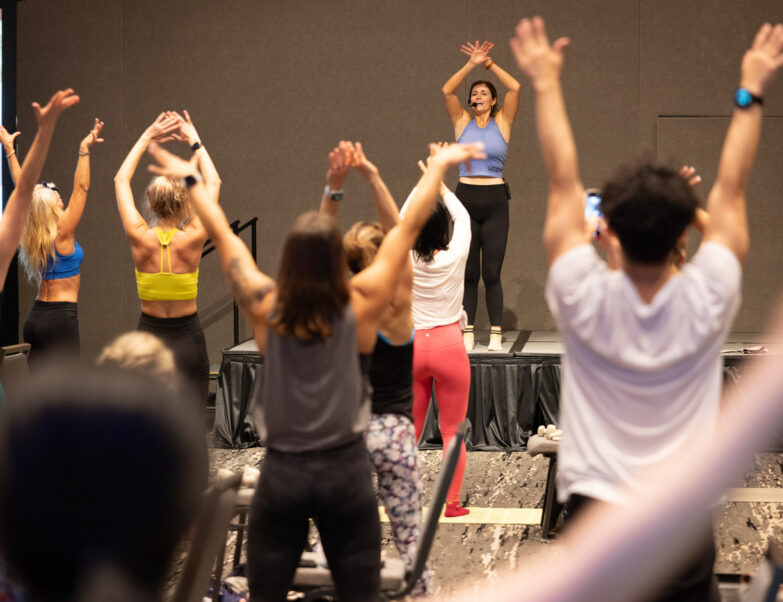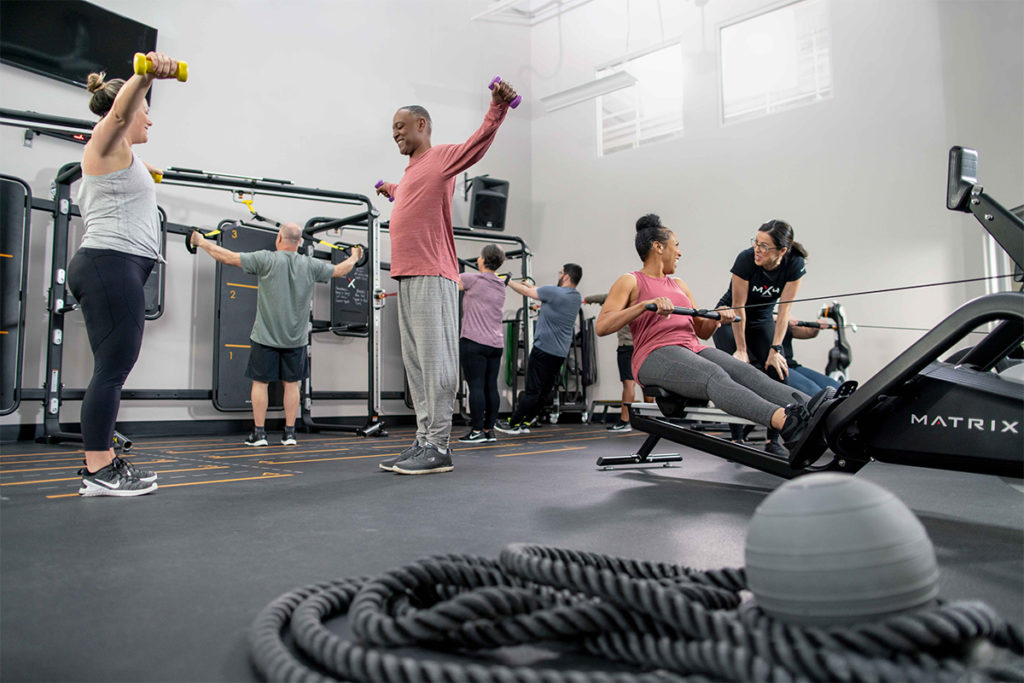Kids sign on with their own trainers
Like many 13-year-olds, Adam Hillen likes sports. As a seventh grader in Mason, Ohio, he plays on his junior high school’s football and wrestling teams.
But his father became concerned when Adam began working out with his friends. “He would go to the weight room with a bunch of kids, and I just thought that invited injury,” Doug Hillen says.
So he took Adam to meet Doug Gibson, a personal trainer and president of Sensible Fitness in nearby Blue Ash. “I wanted Adam to learn the right way to lift weights,” Hillen says. “I thought a personal trainer was the way to go.”
Gibson started Adam on basic strengthening moves, using lunges and leg presses to build up his leg muscles and glutes, and then eventually worked him into speed training, sprinting and lateral running drills, useful for his position as fullback on the football team. The sessions also helped him with his workouts outside the gym.
“Doug teaches me a lot that I can do at my house,” Adam says. More than eight weeks after Adam began the program – at three times a week and $50 per session – his father is already seeing the results. “When you look at him now,” says Hillen, “he has a flatter stomach and more muscles. And he just generally seems to really like to exercise.”
‘
Hillen is one of a growing number of parents who are hiring personal trainers for their kids. Some do it to help with weight loss, others to give their kid a leg up in sports or simply because they want to instill in their child a love of physical activity. Whatever the reason, experts say that working regularly with a good trainer can build kids’ strength; improve their self-esteem, confidence and body image; enhance sports performance; and reduce the risk of injury.
Perhaps most important, it can lay active adulthood. “It’s a huge industry, and some personal trainers are doing great things,” says Dr. Eric Small, chair of the Council on Sports Medicine and Fitness for the American Academy of Pediatrics. But he warns that trainers can harm kids if they lack a proper understanding of child development – kids’ needs and abilities are far different from those of adults.
Trainers working with kids typically train one-on-one or in small groups of three to five, with fees running from $10 an hour to $75 an hour and up. Sessions for younger kids – those between 6 and about 9 years old – tend to focus on movement-oriented activities – jumping, hopping, throwing – while training for older kids leans more toward strength training and conditioning, similar to what an adult might do at the gym.
Here are some tips for finding the right person to work with your child:
• Make sure the trainer has the proper credentials. Simply taking an Internet class doesn’t qualify someone to be a personal trainer. Be sure your child’s trainer is certified by a nationally recognized organization, such as the National Strength and Conditioning Association (nsca-lift.org) or the American College of Sports Medicine (acsm.org) and/or has a bachelor’s degree in physical therapy or a fitness- related field.
Within the past few years, some organizations, like the International Youth Conditioning Association (iyca.org), have begun offering youth-fitness- training certificates, though these are still uncommon.
• Ask what kind of experience the trainer has with kids. Because kids are still growing, they are in a constant state of development and need to be trained accordingly. Look for a trainer who has taken courses in child development or pediatric exercise science or has worked with kids before. Be sure to ask how many of his or her clients are kids. Small says that number should be at least 50 percent.
• See a pediatrician first. Just like adults, kids should have a thorough checkup before they start a new fitness program. If your child has any special medical condition, such as diabetes or asthma, find out what the limitations of his physical activity should be.
Kids who are loose-limbed or have recurring injuries also need to take some precautions with weight training.
Have the pediatrician set restrictions and make sure the trainer knows them.
• Know when to start. Most experts agree that children can start a weight-training program between ages 6 and 8, but only you know your child’s maturity level. Ask yourself, “Can he accept and follow directions? Is he able to participate in group activity?” Even if he’s at the right age biologically, he might not be the right age emotionally.
• Assess the trainer’s personality. When Tammy Olszewski of South Barrington was looking for a trainer for her three kids – Morgan, 12, Michael, 10, and Madison, 8 – she considered Brian Grasso of the IYCA. His bachelor’s degree in exercise science, continuing education in pediatric exercise science and years of working with kids impressed her.
Then, “I met him and his personality was, like, ‘boom.’ My kids adore him,” she says. Kathie Davis, executive director of IDEA Health and Fitness Association, a membership group for fitness pros, stresses the importance of the trainer’s interaction with kids. “We have to make kids want to exercise,” she says. Having a trainer who knows how to interact with kids is essential to getting them motivated. Regardless of the reason parents send their child to a personal trainer, the emphasis should be on having a good time. “Kids don’t respond to repetitive monotony,” like walking on a treadmill, Small says. “They need variety. It has to be fun.”
Olszewski, for one, saw the positive outcome. “My kids didn’t even realize they were exercising,” she says. “They had a blast.” And that is music to any parent’s ears.
|
Traveling? Take time for serious fun Taking your children to the playground is a good way to fool them into getting exercise. But all playgrounds were not created equal. Here are five that go well beyond the obligatory slide, seesaw and swing set. Berkeley Marina Adventure Playground, Berkeley, Calif.: Boats that don’t float, flat tires and old playground equipment are all popular toys at this low-tech, high-energy park. Here, kids build new things out of donated junk. The playground staff has been giving kids hammers, paintbrushes and free rein to do whatever they want (as long as they play safe) since 1978. "We’re like the Old West before the sheriff came to town," says Patty Donald, playground coordinator. Something bigger is at work, too. Educational programs about reducing, reusing and recycling are producing environmentally aware youngsters. River Play Discovery Village in Eugene, Ore., teaches geography and history, as well as physical education. All the equipment is modeled after local natural landmarks, like a 25-foot play structure in the shape of Skinner Butte, with basalt climbing columns modeled after an active climbing area nearby. A nine-foot "rain circle" sprays water, and in a storytelling area, kids learn about the Kalapuya tribe that once inhabited the region. Guadalupe River Park, San Jose, Calif.: The main attraction here is its 930-square-foot Monopoly board, which holds the Guinness World Record for the biggest permanent one on the planet. Throw gigantic dice and wear a giant thimble on your head to play a round. Just don’t go to jail – you’ll have to wear a striped jailbird outfit until you get out. |





